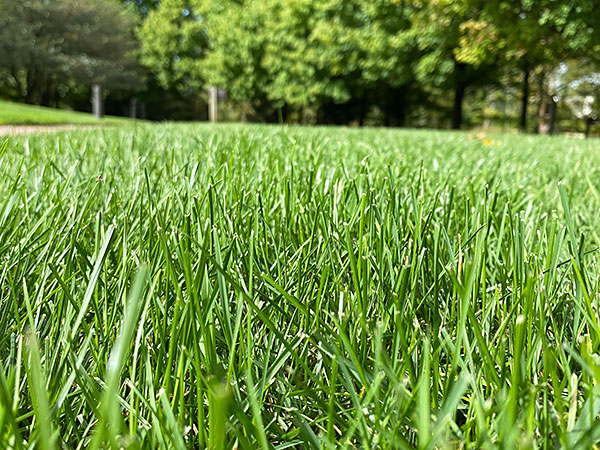
Mid- to end of August is the best time to seed bare areas of lawn, overseed thinning grass, or lay down sod. When seeding lawns, use grass seed appropriate to your site. The best choice for most lawns in northern Illinois is a mix of Kentucky blue grass, perennial rye, and fescue seeds. If seeding in a shaded area, purchase a shade-tolerant mix. Cultivate soil down to a few inches and broadcast grass seed and starter fertilizer according to package directions. Cover with loose straw to prevent wind or bird damage to seeds. Keep soil moist until seed germinates.
To overseed an entire lawn, consider hiring a professional or renting a slit-seeding machine that automatically drops seed into small slits made by the machine.
Before laying sod, prepare soil as above. Water deeply to encourage roots to grow downward into new soil bed. Purchase sod grown on soil similar to your own. Let grass grow a bit longer before mowing. Set mower at proper height so that no more than one-third of the grass blades are removed.
Refrain from fertilizing lawns until September.
Annual white grub damage will begin to show up this month as browned-out areas of turf that pull back easily, like a carpet. Grubs chew grass roots, resulting in turf that lifts up. Minor damage is usually not cause for treatment. Pull back turf and count grubs (white C-shaped larvae with black heads); 10 to 12 per square foot is considered enough to treat. Recommended chemical products vary in their application time. Many gardeners wait until the third week of the following June to apply imidacloprid. If possible, try to avoid using strong insecticides if damage is light. If necessary, treat affected areas rather than entire lawn.
Homeowners might notice a chewed-up appearance to their lawns if grubs are numerous. Skunks, raccoons, and birds will tear up grass searching for grubs, especially at night, sometimes doing more damage than the grubs themselves.
In times of drought, excessive heat, or water restrictions, grass can go dormant. The grass will turn yellow but the crown of the plants will remain alive with just a half-inch of water over several weeks. Grass will green up as soon as normal rainfall returns.

